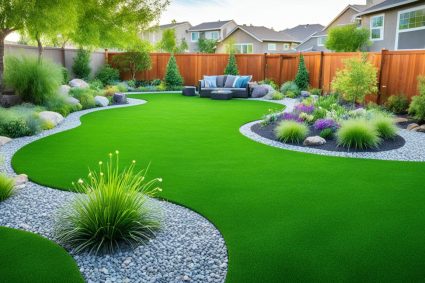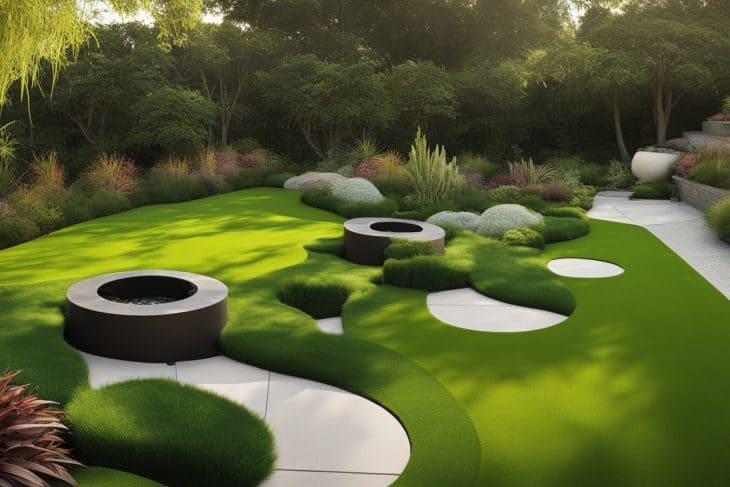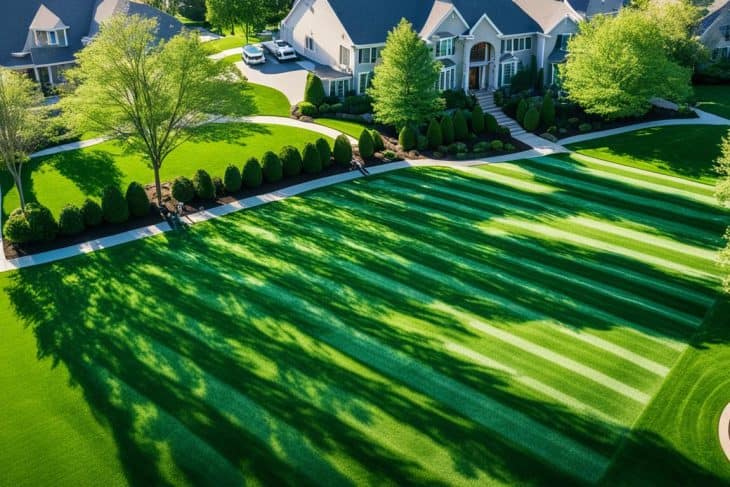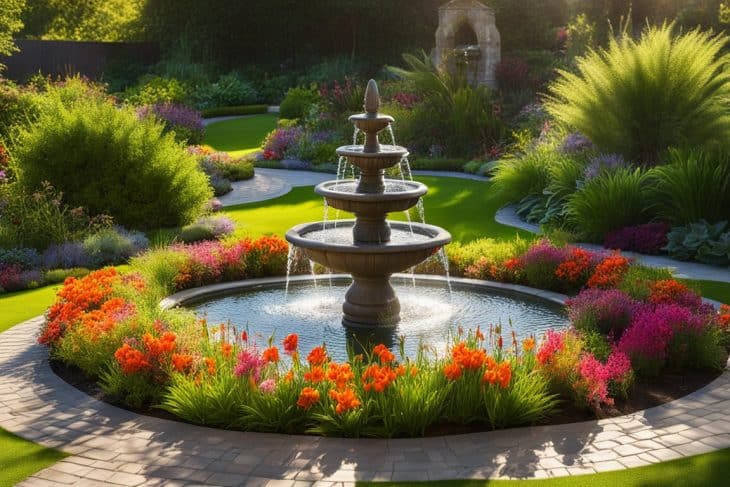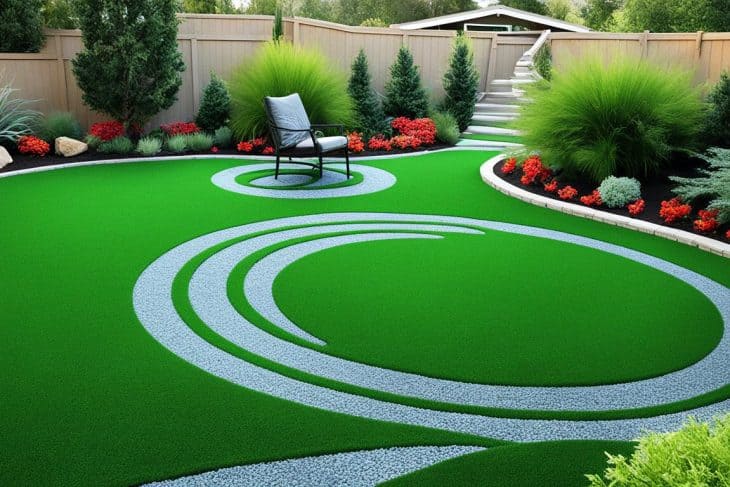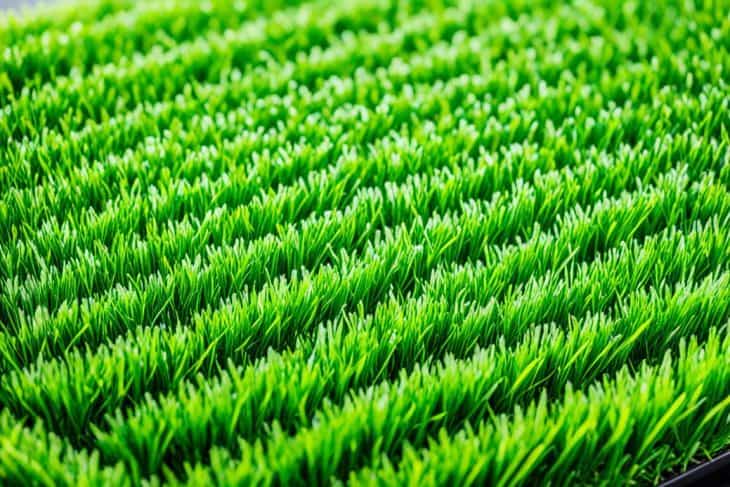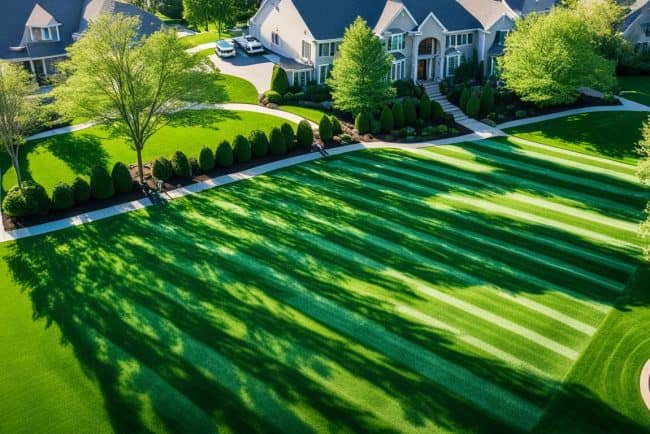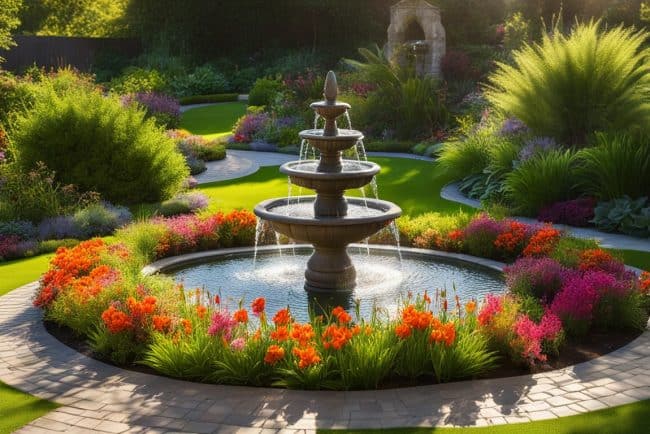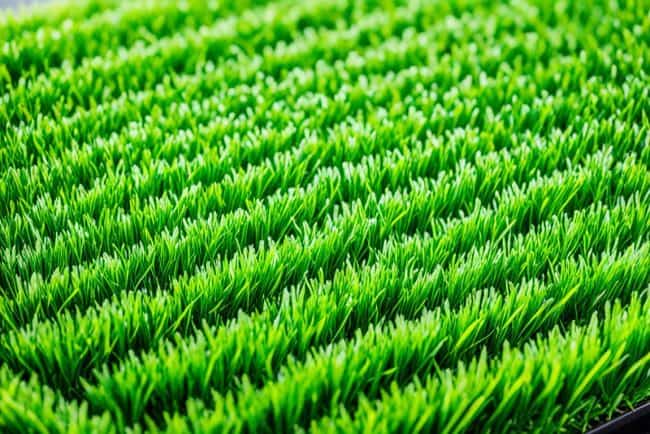Did you know using a gas lawn mower for an hour is like having eleven cars run at the same time? This fact shows we need better ways to care for our lawns. When we choose eco-friendly grass, we help our planet and save money too.
Keeping a traditional lawn green takes lots of water, fertilizers, and chemicals. This can get expensive and hurt nature. By choosing sustainable grass, we cut down on pollution and help local wildlife. Options like low-mow grass or beautiful wildflower meadows offer great benefits. They keep your yard looking great, support the soil, and help animals too.

Why Choose Environmentally Friendly Grass?
Choosing eco-friendly grass benefits both our yards and the planet. These options make yards look great and help the environment. They support local wildlife and keep ecosystems healthy. This knowledge helps us make better choices for the environment.
The Environmental Impact of Traditional Lawns
Traditional lawns need a lot of water, chemicals, and energy. Using gas lawn tools adds pollution, like many cars do. This is bad for the air we breathe. Plus, they can cause water pollution and soil erosion. It’s important we look for better options.
Benefits of Eco-Friendly Grass Options
Eco-friendly grass has many upsides. It cleans the air by catching carbon dioxide and dust. This makes the air healthier. Also, it can cool down cities by up to 14 degrees. This means we need less air conditioning. And, it helps the ground absorb water and improves soil. These lawns make neighborhoods nicer places, showing the value of green choices.

Best Eco-Friendly Alternatives to Traditional Grass
Switching to an eco-friendly yard is simpler with alternatives to traditional grass. These options save water and add beauty outdoors. Low-maintenance groundcovers and native plants are top choices for their sustainability and ease of care.
Groundcovers: Low-Maintenance Choices
Choosing low-maintenance groundcovers can lower your ecological impact. Plants like creeping thyme and clover need little attention. They both fight weeds well.
Clover keeps the soil healthy without fertilizer by capturing nitrogen. Creeping thyme is also robust, handling light walking and drought.
| Groundcover Plant | Maintenance Level | Drought Resistance | Soil Benefits |
|---|---|---|---|
| Clover | Very Low | High | Enriches soil, reduces weeds |
| Creeping Thyme | Low | High | Improves drainage, attracts pollinators |
| Moss | Minimal | Moderate | Reduces erosion, no mowing required |
Native Plants: Thriving in Your Region
Adding native plants to my yard boosts the local ecosystem. These plants naturally fit the climate, needing less water and supporting local wildlife. Using native species helps save our local plants and animals.
With natural rain, native plants grow well, reducing our need for irrigation. This saves water and makes our landscape more diverse.

Understanding Eco-Friendly Grass Options
Choosing eco-friendly grass for your yard helps both the planet and your workload. These grasses need fewer resources and support local animals and insects. By understanding them, you can pick grass that’s kind to nature and easy for you.
What Makes Grass Eco-Friendly?
Eco-friendly grasses need less water, fertilizer, and pesticide. They’re good in dry conditions, saving lots of water. For example, while regular lawns use about 3 trillion gallons of water yearly in the U.S., eco-friendly types cut this use down. They also invite wildlife, offering homes to many creatures, unlike regular lawns.
Comparing Traditional and Eco-Friendly Grasses
Regular and eco-friendly grasses differ in upkeep, environmental effects, and costs. Traditional lawns need much water, fertilizers, and pesticides, harming the environment. They use about 70 million pounds of pesticides yearly in the U.S., hurting local ecosystems.
However, eco-friendly lawns ask for less from you and are better for nature. Choosing tough, local grass means a great lawn without chemicals. Some places, like California, give money back to those who choose eco-friendly yards. Montgomery County, Maryland also supports natural lawns for the benefits of greener spaces and cleaner air and water.

How to Cultivate Sustainable Turf
Creating a vibrant, eco-friendly lawn takes thought and care. Proper soil prep and choosing the right grasses help me make a sustainable lawn. It thrives and saves resources. I use smart water-saving ways to keep my lawn healthy, using less water.
Soil Preparation and Selection of Varieties
I start with checking my soil’s pH and nutrients. This tells me how to improve it. I use organic stuff like compost to make the soil better. It holds more water that way.
I choose plants like clover that don’t need much water. They are better for dry times and help bees and butterflies. It’s a win-win for water saving and helping nature.
Water Conservation Techniques
Keeping my lawn green without wasting water is key. I give my lawn an inch of water each week in summer. Deep watering makes the roots strong. Watering in the early morning cuts down on waste, making sure my lawn stays hydrated.
I also use rainwater by directing downspouts to my lawn. Mulching with grass cuttings and leaves feeds the soil. It also stops erosion and keeps the water where it should be.
| Technique | Description | Benefits |
|---|---|---|
| Watering Deeply | Water once a week to encourage deep root growth. | Reduces reliance on water and promotes drought resistance. |
| Using Clover | Planting clover as a lawn alternative. | Requires little fertilizer and attracts pollinators. |
| Mulching | Leaving grass clippings on the lawn. | Returns nutrients to the soil and reduces waste. |
| Organic Fertilizers | Using compost or manure for soil enrichment. | Improves soil health and water retention. |
| Buffer Zones | Creating natural zones between lawns and waterways. | Prevents pollution and maintains ecosystem health. |
Creative Lawn Designs: Beyond Grass
Innovative lawn designs have changed how we use our outdoor spaces. Now, we see more than just traditional grass lawns. Options like wildflower meadows and hardscapes make yards look better. They’re good for the environment, too. These choices need less care and offer many benefits.
Wildflower Meadows: A Colorful Alternative
Wildflower meadows brighten up lawns with less effort. They draw in bees, butterflies, and birds. This increases the variety of life in your yard. You don’t need chemical fertilizers or pesticides. Wildflower meadows grow well on their own. They change with the seasons, making your landscape always interesting.
Incorporating Hardscapes and Pathways
Adding hardscapes makes your outdoor space more useful. Think about paths, gravel, or wood decks. These parts don’t need mowing. They create cozy spots for chilling out or having fun. I’ve found hardscapes save water and cut down on yard work. They look great with my wildflower meadows. Using different materials and patterns, I make my yard seem bigger.
Maintaining Your Environmentally Friendly Yard
To keep my yard eco-friendly, I follow a few smart lawn care tips. One easy but effective method is leaving grass tall, at least three inches. This helps the grass stay thick and healthy, and it needs less water. I also make sure to trim no more than one-third of the blade length each time to avoid stress on the grass and keep our water clean.
Using grass clippings as mulch cuts down on the need for extra fertilizers and helps with reducing landfill waste. These clippings act like a natural fertilizer every time you mow, which improves the soil. When I do use fertilizer, I choose types without phosphorus and avoid weed-and-feed products to keep our water safe and my lawn healthy.
It’s important to keep mower blades sharp to avoid hurting the grass. Testing the soil often lets me know exactly what fertilizer it needs, so I don’t use too much and harm the environment. By aerating, removing thatch, and using pest control wisely, I keep my lawn care sustainable. This makes my yard strong, beautiful, and good for our planet.

